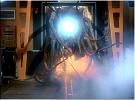el cid again
Posts: 16922
Joined: 10/10/2005
Status: offline

|
quote:
ORIGINAL: wdolson
quote:
ORIGINAL: Mike Scholl
Truth is that Japanese fighters DID have a lot of trouble tackling B-17's until the more heavily-armed models started coming online. They lacked the firepower to bring down a "Flying Fortress" and to use what little they did have had to close well within the range of those defending .50 cals. Which considering the very light construction of Japanese early war fighters (you have to give up a lot to get that range and performance), was close to suicidal. Being able to "turn circles" around the bombers did them absolutely no good at all, as the bombers could pretty much outgun them from all approaches, especially if there were several flying in formation.
Basically you have a "Lightweight" with short arms trying to box with a slow but powerful "Heavyweight---with the additional dissadvantage that the flyweight is required to close in and try to "Knock Out" his larger opponant, meaning that Heavyweight "jab", "hook" and "uppercut" all get a chance to land.
Suburo Sakai talks about fighting B-17s in his book. The B-17s flew at altitudes where the Zero was very sluggish and then the Zero was very lightly armed for the task. He brought down a D early in the war with repeated tail end attacks, but the Zero's performance at that altitude was so poor, he only had a small speed advantage on the B-17. If he had been attacking a B-17E, or if there had been more than one, he probably would not have succeeded.
It probably wasn't until the Japanese had the Tony where they had a plane which could perform at the same altitudes the B-17s flew. I notice the ceiling for the B-17s is only in the low 20Ks. I know in Europe the B-17s were routinely flying around 30,000 feet, so I think the maximum altitude for American heavies is too low.
Bill
Altitudes for planes in CHS and stock are completely inconsistent. This was deliberate - but only partially done - not consistently done - because of modders' views of the rarity of high altitude combat. Sometimes they took off 10,000 feet, sometimes 2000 feet, sometimes nothing, and sometimes they ADDED altitude - even in one case more than 100% more altitude (a mistake?). RHS adopted a different system - "operational altitude" - which is a fraction of "service celiing" - and the fraction depends on the engine type. Turbo supercharged planes do better than regular.
And jets better still. This was combined with realistic limits on AAA - so you can overfly it if your plane is good enough.
|
 Printable Version
Printable Version















 New Messages
New Messages No New Messages
No New Messages Hot Topic w/ New Messages
Hot Topic w/ New Messages Hot Topic w/o New Messages
Hot Topic w/o New Messages Locked w/ New Messages
Locked w/ New Messages Locked w/o New Messages
Locked w/o New Messages Post New Thread
Post New Thread